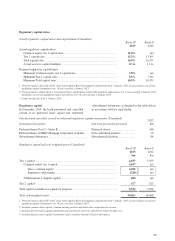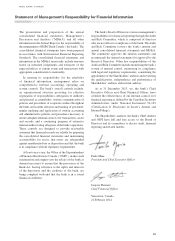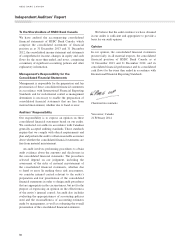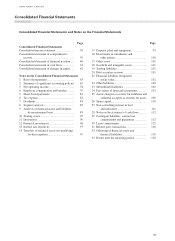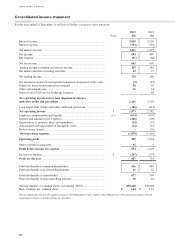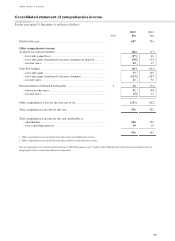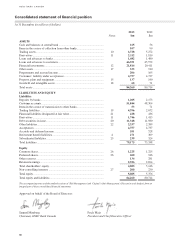HSBC 2013 Annual Report Download - page 52
Download and view the complete annual report
Please find page 52 of the 2013 HSBC annual report below. You can navigate through the pages in the report by either clicking on the pages listed below, or by using the keyword search tool below to find specific information within the annual report.
HSBC BANK CANADA
50
Information Security Risk protects bank information
assets against the risk of loss, operational discontinuity,
misuse, unauthorized disclosure, inaccessibility and
damage. It also protects against the ever-increasing
potential for civil or legal liability that the bank could
face as a result of information inaccuracy and loss, or
the absence of due care in its protection. Information
Security Risk covers all information processes, physical
and electronic, regardless of whether they involve people
and technology or relationships with trading partners,
customers and third parties. Information Security
Risk addresses information protection, confidentiality,
availability and integrity throughout the life cycle of the
information and its use within the bank. The security of
our information and technology infrastructure is crucial
for maintaining our banking applications and processes
while protecting our customers and the HSBC brand.
The Business Continuity Management function
is responsible for ensuring that our businesses and
functions have the resilience to maintain continuity in
the face of major disruptive events. Within this wider
risk, Business Continuity Management pre-plans and
considers strategies to minimize the adverse effects
of major business disruption against a range of actual
or emerging risks. The pre-planning concentrates
on the protection of customer services, our staff,
reputation, revenue generation and the integrity of
data and documents. Each business and function has
its own recovery plan, which is developed following
the completion of a Business Impact Analysis. This
determines how much time the business could sustain an
outage before the level of losses becomes unacceptable,
i.e. its criticality. These plans are reviewed and tested
every year. The planning is undertaken against Group
policy and standards and each business confirms in an
annual compliance certificate that all have been met.
Should there be exceptions, these are raised and their
short-term resolution is overseen by Group and regional
business continuity teams.
Fiduciary risk
Fiduciary risk is the risk of breaching fiduciary duties
where we act in a fiduciary capacity. It is the risk
associated with failing to offer services honestly and
properly to clients in that capacity. We define a fiduciary
duty as any duty where we hold, manage, oversee or have
responsibilities for assets of a third party that involves
a legal and/or regulatory duty to act with the highest
standard of care and with utmost good faith. A fiduciary
must make decisions and act in the best interests of the
third parties and must place the wants and needs of the
client first, above the needs of the organization.
Fiduciary risk is managed within the designated
businesses via a policy framework and monitoring of
key indicators. The bank’s principal fiduciary businesses
(designated businesses) are:
– HSBC Trust Company (Canada), where it is exposed
to fiduciary risk via trustee’s responsibilities, and
– HSBC Global Asset Management (Canada) Limited,
which is exposed to fiduciary risks via its investment
management activities on behalf of clients.
Factors that may affect future results
The risk management section in the MD&A describes
the most significant risks to which the bank is exposed
and if not managed appropriately could have a material
impact on our future financial results. This section
outlines additional factors which may affect future
financial results.
General economic and market conditions
Factors such as the general health of capital and/or
credit markets, including liquidity, level of activity,
volatility and stability, could have a material impact
on our business. As well, interest rates, foreign
exchange rates, consumer saving and spending, housing
prices, consumer borrowing and repayment, business
investment, government spending and the rate of
inflation affect the business and economic environment
in which we operate.
In addition, the financial services industry is
characterized by interrelations among financial services
companies. As a result, defaults by other financial
services companies could adversely affect our earnings.
Given the interconnectedness of global financial markets
and the importance of trade flows, deterioration of the
still-unresolved European sovereign debt situation could
affect the supply and cost of credit and constrain the
pace of economic growth in Canada.
Fiscal, monetary and interest rate policies
Our earnings are affected by fiscal, monetary, interest
rate and economic policies that are adopted by Canadian
regulatory authorities in Canada. Such policies can
have the effect of increasing or reducing competition
and uncertainty in the markets. Such policies may also
adversely affect our customers and counterparties,
causing a greater risk of default by these customers
Management’s Discussion and Analysis (continued)















